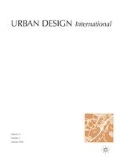Abstract
While the Neo-Byzantine style was in 19th-century architecture in Croatia exclusively used for architectural projects funded by the Serbian Orthodox Church, in the period shortly before the WWI, it also started to be used in the architecture of the Catholic Church. The crucial role in spreading the use of the style was played by the pioneer of Croatian modernist architecture Viktor Kovačić and his design for St Blasius’ Church in Zagreb (1910–1913). Neo-Byzantine appeared primary due to ideological and political reasons, because it served as a reference to the period of Croatian political independence in the early Middle Ages. Croatia was then a province within the Austro-Hungarian Monarchy that was striving for greater autonomy or even independence. During the 1920s the Neo-Byzantine style emerged again in Croatian church architecture, primarily owing to architect Stjepan Podhorsky who applied the style in his numerous church building designs, including the large memorial church in Duvno (present Tomislavgrad in Bosnia-Herzegovina). The church was built in relation to the millennial celebration of the Croatian kingdom (925–1925), sponsored by the Karađorđević dynasty of the newly formed state of the Kingdom of Serbs, Croats, and Slovenes/Kingdom of Yugoslavia, that Croatia became part of in 1918.






Similar content being viewed by others
Notes
Similar in: Mayer (1925).
This work has been supported in part by Croatian Science Foundation under the project IP-2018-01-9364 Art and the State in Croatia from the Enlightenment to the Present.
References
Achleitner, F. 1999. The Pluralism of Modernity: The Architectonic “Language Problem” in Central Europe. In Shaping the Great City. Modern Architecture in Central Europe, 1890–1937, ed. E. Blau and M. Platzer, 94–106. Prestel: Munich, London, New York.
Bullen, J.B. 2003. Byzantium Rediscovered. London: Phaidon Press.
Cvijić, A.K. 1924. Duvanjsko je polje oživjelo. Jutarnji List 4448: 5–6.
Damjanović, D. 2010. Herman Bollé and Croatian Pavilions at the Exhibitions in Trieste (1882) and Budapest (1885 and 1896). Centropa 10 (3): 231–243.
Goss, V.P. 2006. Josef Strzygowski and Early Medieval Art in Croatia. Acta Historiae Artium 47: 335–343.
Goss, V.P. 2007. What Josef Strzygowski did not know. In Immagini e Ideologia—Studi in onore di Arturo Carlo Quintavalle, ed. A. Calzona et al., 447–455. Electa: Parma.
Jurić, Z. 2003. Crkva sv. Blaža u Zagrebu. In Viktor Kovačić: život i djelo, ed. M. Begović, 160–188. Zagreb: Hrvatska akademija znanosti i umjetnosti.
Kolar, M. 2009. Gradnja duvanjske bazilike u spomen tisućgodišnjice krundibe kralja Tomislava. In Fra Mijo Čuić-graditelj i uznik. U prigodi 50. obljetnice smrti/1959–2009., ed. R. Jolić, J. Krišto, pp. 113–126. Mostar-Tomislavgrad: Hercegovačka franjevačka provincija Uznesenja BDM, Franjevačka knjižnica Mostar.
Krišto, J. 2009a. Fra Mijo Čuić o politici i politika o njemu. In Fra Mijo Čuić-graditelj i uznik. U prigodi 50. obljetnice smrti/1959–2009, ed. R. Jolić, J. Krišto, pp. 85–100. Mostar-Tomislavgrad: Hercegovačka franjevačka provincija Uznesenja BDM, Franjevačka knjižnica Mostar.
Krišto, J. 2009b. Nadvladavanje duvanjske bare: fra Mijo Čuić u društvima i sučeljavanja u njima. In ibid, pp. 101–125.
Kršnjavi, I. 1905. Crkva svetog Blaža u Zagrebu. Narodne Novine 71 (273): 1–3.
Linarić, l. 2014. Župna crkva svetog Jurja Mučenika u Đurđevcu arhitekta Stjepana Podhorskog i sakralna baština Đurđevca, MA thesis, Faculty of Humanities and Social Sciences, Zagreb, Croatia.
Maruševski, O. 1997. Arhitektonsko-urbanističke veze Zagreba i Beča na prijelomu stoljeća. In Fin de siècle Zagreb—Beč, ed. D. Barbarić, 197–228. Školska knjiga: Zagreb.
Maruševski, O. 2003. Kovačić u kontekstu svog vremena. In Viktor Kovačić: Život i djelo, ed. M. Begović, 29–50. Hrvatska akademija znanosti i umjetnosti: Zagreb.
Mayer, M. 1925. S puta na Duvanjsko polje. Zagreb: Tiskara Narodnih novina.
Moravánszky, A. 1998. Competing Visions: Aesthetic Invention and Social Imagination in Central European Architecture, 1867–1918. Cambridge, London: MIT Press.
Pelc, M. 2015. Josef Strzygowski und die kroatische Kunstgeschichte. In Von Biala nach Wien. Josef Strzygowski und die Kunstwissenschaften, ed. P. O. Scholz and M. A. Dlugosz, 176–187. European University Press Verlagsgesellschaft: Vienna.
Piplović, S. 2001. Teorije Josefa Strzygowskog o umjetnosti Dalmacije. VDG Jahrbuch 8: 121–130.
Podhorsky, S. 1925. Gradnja basilike na Duvanjskom polju. Jutarnji list 4926: 5.
Premerl, T. 1991. Arhitekt Stjepan Podhorsky i njegove crkve. Služba Božja 31 (1): 46–50.
Radić, F. 1900. Hrvatsko-bizantinski slog. Starohrvatska prosvjeta. Glasilo Hrvatskoga starinarskog družtva u Kninu 1: 2–36.
Author information
Authors and Affiliations
Corresponding author
Additional information
Publisher's Note
Springer Nature remains neutral with regard to jurisdictional claims in published maps and institutional affiliations.
Rights and permissions
About this article
Cite this article
Damjanović, D. Byzantine revival as national style in Croatian architecture 1910–1945. Urban Des Int 27, 268–273 (2022). https://doi.org/10.1057/s41289-019-00098-2
Published:
Issue Date:
DOI: https://doi.org/10.1057/s41289-019-00098-2




